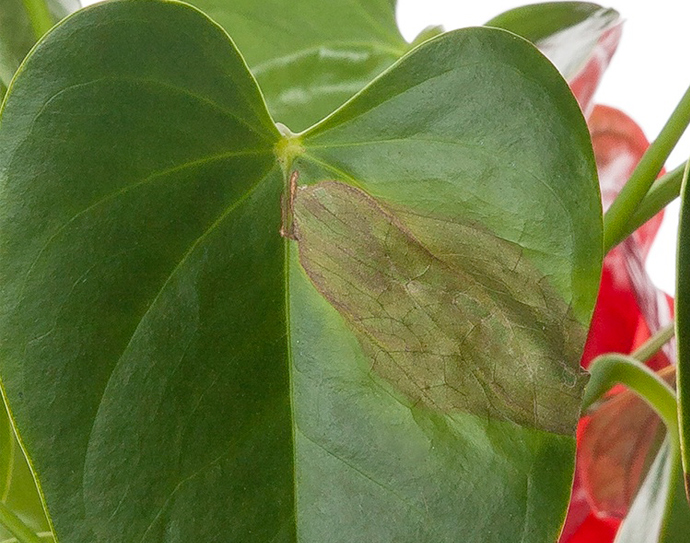
Our plant friends brighten our spaces and uplift our moods, so there’s always a twinge of guilt or sadness when their leaves turn brown. Confusion sets in, leaving us to wonder what we did wrong.
Although leaves are one of the top indicators of a plant's health, when they turn brown, it’s time to spring into action. So what do you do when your beautiful Just Add Ice orchid's or other indoor plant’s leaves begin to turn brown?
In many cases, a little intervention can return your plant to a healthy state. For instance, if your plant’s leaves are pale with brownish streaks, it may mean it has come down with a bacterial or fungal disease. If the leaves are still intact, you can treat them by isolating the plant and removing any infected foliage using a sterilized cutting tool.
Here are five common reasons your plant’s leaf tips are brown and what to do about it:
Botanists have identified 17 nutrients essential to optimal orchid development. Fertilization is a crucial step to keeping your plant strong and healthy through its reblooming cycle.
Pro Tip: While it can be confusing when determining when and how to give your plants these essential nutrients they'd usually receive in their native environment, just remember your orchid doesn't need to be fertilized when it's blooming and non-flowering plants should be fertilized once a month.
Did you know that your plant’s leaves are susceptible to sunburn? Yes! Just as people may become a little dehydrated after a day of sunbathing, so can your indoor plant. Unfortunately, little can be done to save a plant after it has sustained severe sun and heat damage.
Pro Tip: When you notice a yellow spot on your plant’s leaves, move it to an area with indirect sunlight versus direct sunlight. Remove the plant from its vase to see if its roots are dehydrated. Well-watered roots should be a healthy green color. If the roots are grayish-white, then more water is needed.
Orchids and other indoor plants do well when they are given generous doses of bright, indirect light. These light sources can be from the sun or artificial lighting.
Pro Tip: To ensure your Just Add Ice orchid or indoor plant gets sufficient light, move it to a south- or west-facing window. A sheer curtain shields your plant from direct sunlight to make this light source sufficient.
This common condition is also called root rot. Root rot occurs when roots are overwatered or sit in water for an extended period. If your orchid has brown or black mushy-looking roots, stop watering it immediately and wait for the roots to dry. Note: this may take up to 10 days.
Pro Tip: If after ten days your plant does not recover, begin treatment after all of your plant's blooms fall. Using a sterile cutting tool to remove all rotted roots, and then repot your plant in fresh repotting soil. Mist the leaves every morning to encourage new root growth and follow Just Add Ice's ice cube watering method.
Are your plant’s leaves dull? A thirsty plant will let you know it needs water.
Pro Tip: Rehydrate your plant with a humidity tray. Set your plant on a shallow tray filled with a layer of fancy rocks or beads and a small amount of water to give your plant the amount of water it needs while also giving it a decorative look.
Fortunately, we not only sell gorgeous indoor plants but offer plant resources and care tips. Visit our care site and, if you haven’t already, be sure to subscribe to our blog for weekly care tips, decorating ideas and more. You can also visit our care site to download free plant care guides.

Copyright Just Add Ice® Orchids 2023